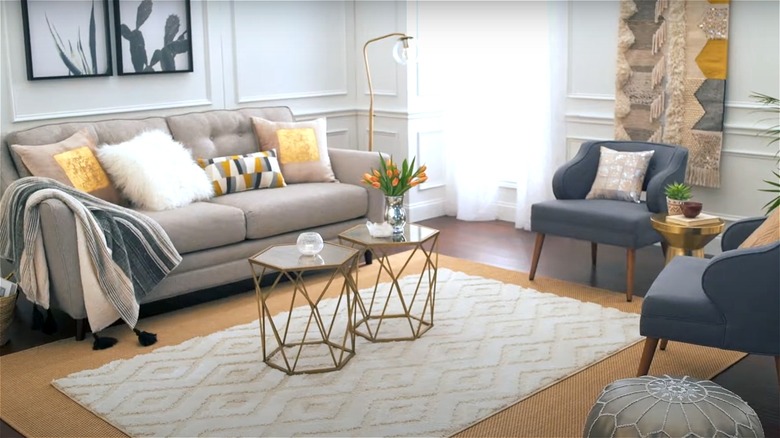HGTV's Brian Patrick Flynn Gives Us His Design Secret For Adding Depth To A Room
In interior design, the depth of a room does not mean how deep the room actually is. Instead, it refers to the character and personality you allow to shine through the room's decor and how you style the pieces, even down to the smallest details. Unsure of how to add depth to your rooms? HGTV's Brian Patrick Flynn says that the best place to start is with rug layering.
This tactic takes at least two rugs and places them on top of one another to add visual contrast to a room with various colors and patterns. When layering rugs in a dining room, Flynn says that "The play on different scales and patterns and similar color schemes between the two [rugs] adds a lot of depth below the dining room table, and it also makes the space feel completely different than it was when we first got here," via HGTV. But, rug layering is more than simply adding two or more rugs to a room. There's a methodical strategy to follow when it comes to adopting this technique to increase your room's depth. Here's how to do it.
How to layer rugs for depth
To add depth to your room via rug layering, it's important to begin with a large piece as the base. The exact scale you use will depend upon the size of the room, so it's important to measure your room to know the dimensions you're working with. You don't want to start off with a piece that's too large or too small, especially since the top rug is usually ⅔ the bottom rug size.
Rug layering works best in larger rooms where the flooring is still visible after placing down your largest rug. To make the contrast of shades and prints pop in the room, a neutral option is great to choose for the bottom, as it will be easy to pair with another piece. Once you have your base picked out and down, place your top rug on top. Since the base is neutral and quiet in color and patterns or prints, the top piece should provide a stark contrast with bolder colors and designs that still tie into the rest of the room. Make sure your floor covering has hues and patterns that blend effortlessly with the overall room design to look cohesive with your style.
